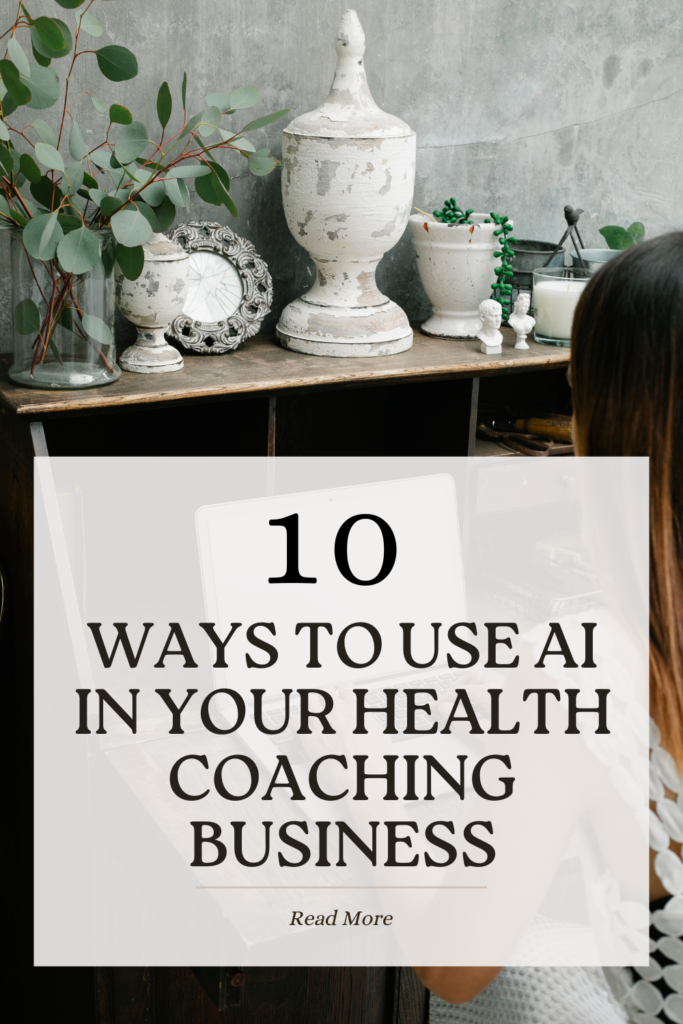Have you noticed something strange lately? You’re subscribed to several newsletters, and suddenly they all sound eerily similar. The same inspirational openings, identical adjective choice when describing products or services, and those suspiciously uniform calls to action.
This is what happens when AI tools are used blindly – copying and pasting whatever ChatGPT generates without guidance, customization, or your unique voice.
As a website designer and copywriter who works exclusively with health coaches, I’ve watched the AI revolution unfold in real-time. And let me tell you: AI can be either your most powerful ally or the quickest way to blend into the background noise of the wellness industry.
The difference? Understanding that AI is a tool that requires human direction, refinement, and wisdom – not a replacement for your expertise or authentic voice.
Whether you’re skeptical about AI or already experimenting with it, this guide will help you navigate the balance between efficiency and authenticity in your health coaching business.
Looking to improve your website’s visual appeal too? Grab our free Wellness Website Photo Checklist to ensure your visuals are as compelling as your copy.
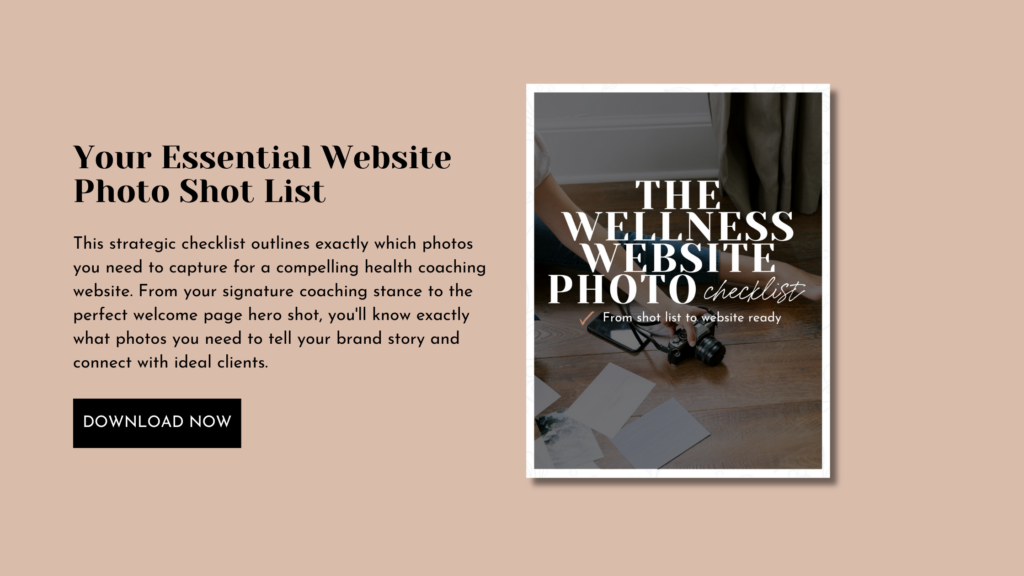
Table of Contents
AI for Health Coaches: Why Health Coaches Should Consider AI Tools in 2025
Let’s address the elephant in the room: the wellness industry is built on human connection, intuition, and personalized care. So why would a health coach even consider bringing AI into their practice?
The answer lies in understanding what AI actually is – not a replacement for your expertise, but a tool that can handle time-consuming tasks while you focus on what truly matters: connecting with clients and creating transformation.
The Reality of Running a Health Coaching Business Today
If you’re like most health coaches, your day probably looks something like this: You wake up early to create content for social media before your first client session. Between appointments, you’re frantically drafting this week’s newsletter. Your lunch break is spent developing resources for a client who’s struggling with emotional eating. After sessions end, you’re answering similar questions from multiple clients via email. And somewhere in all of this, you’re trying to update your website copy that never quite captures your approach.
This relentless workload leaves many health coaches feeling stretched thin, unable to serve more clients without sacrificing their own wellbeing – the very thing they encourage clients to prioritize. The passion that drove you to become a health coach can quickly be overshadowed by the administrative demands of running a business.
Where AI Can Create Genuine Value (Without Compromising Authenticity)
AI tools, when used strategically, can help you reclaim hours of your week by supporting your creative and administrative processes. Imagine drafting initial content that you then refine with your unique voice and expertise, rather than staring at a blank page. Imagine having a tool that helps organize your thoughts and ideas into structured frameworks for client programs. Consider how streamlining repetitive communications while maintaining personalization could free you to focus on deeper client work.
AI can serve as a thought partner, helping you think through complex problems or enhance creativity by suggesting new approaches.
The key distinction? AI should be your assistant, not your replacement. The most successful health coaches use AI as a starting point that they then transform with their expertise, client knowledge, and authentic voice.
The Ethical Considerations Every Health Coach Should Consider
Before we explore specific applications, it’s important to establish some boundaries for ethical AI usage in health coaching. Client confidentiality remains paramount – never input client information into public AI tools where data privacy isn’t guaranteed. Any health advice generated should always be thoroughly reviewed by you, the qualified professional, to ensure it aligns with your approach and is appropriate for your clients.
Transparency with clients about where and how you use AI builds trust rather than diminishing your expertise. And, most importantly, your unique methodology should guide the AI, not the other way around. The final content should sound like you – not a generic wellness practitioner whose voice blends in with every other health coach online.
When these principles guide your AI usage, you maintain the integrity of your practice while gaining efficiency in areas that previously drained your time and energy.
Now that we’ve established why thoughtful AI integration makes sense for many health coaches, let’s explore exactly how to implement it in your business without losing what makes your approach special.
Want to ensure your website instantly communicates your unique approach? Download our free 5-Second Success Formula to create above-the-fold content that captures attention and communicates your value proposition.
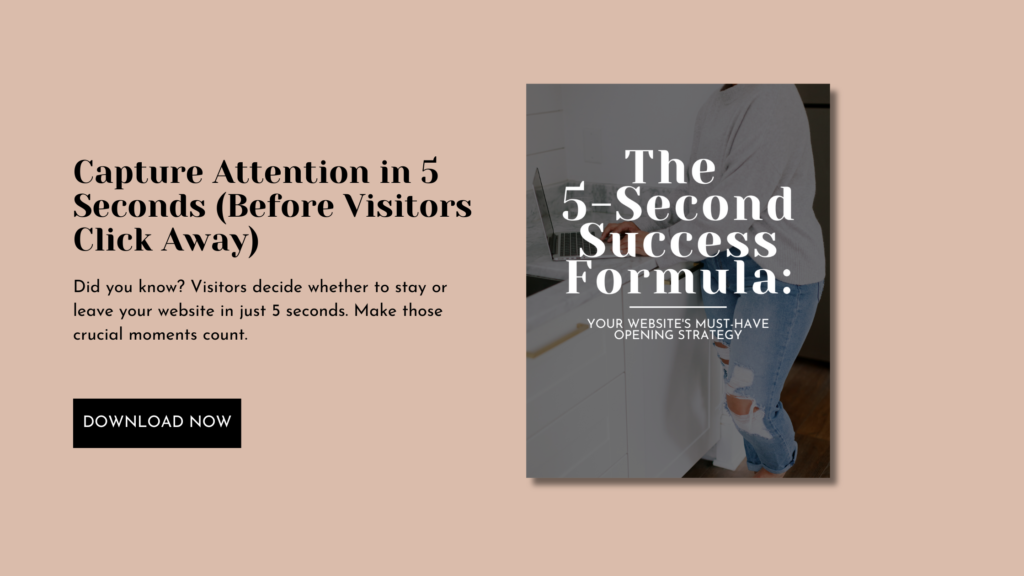
Understanding AI’s Role in Your Health Coaching Business
No AI tool can match your lived experience, your ability to read between the lines with clients, or the intuitive connections you make based on years of practice. AI cannot replace your unique philosophy and approach to wellness. I’ve seen too many health coaches end up with generic-sounding content because they asked AI to “write health coaching website copy” without first explaining their specific methodology or perspective on healing.
The most successful uses of AI in health coaching happen when you guide the tool with your expertise rather than expecting it to generate expertise for you.
Finding the Right Balance in Your Practice
The sweet spot for using AI in your health coaching business lies in identifying which tasks benefit from structural support versus which require your full creative and intuitive attention. The key is intentionality—being deliberate about where and how AI fits into your business rather than applying it haphazardly or avoiding it entirely out of fear.
As we move into exploring specific applications, remember that each suggestion is a starting point that should be adapted to your unique practice and philosophy. The goal isn’t to use AI for everything, but to use it strategically for tasks where it truly adds value while preserving the human elements that make your health coaching practice special.
10 Practical AI Applications for Health Coaches
Let’s explore specific ways to implement these tools. These applications address common challenges health coaches face – areas where AI can provide genuine value without compromising the personal touch that makes this work special.
1. Content Creation and Repurposing
Content creation is perhaps the most obvious application of AI for health coaches, but it’s also where the most mistakes happen. Simply asking an AI to “write a blog post about gut health” will yield generic content that sounds like every other health website. The magic happens when you guide the AI with your specific approach.
Health coaches who specialize in particular methodologies can provide AI with details about their specific approach, examples of the transformations they help create, and their unique perspective on wellness. The initial draft can then be enhanced with personal stories and the exact language used with clients.
The difference is remarkable. Rather than content that could appear on any wellness website, you can create articles that distinctly communicate your approach – but in half the time it would take to write from scratch.
Here’s what this looks like in practice:
Before (Basic Prompt): “Write a blog post about the connection between gut health and anxiety.”
After (Strategic Prompt): “I’m a health coach who specializes in helping busy professionals improve their gut health to reduce anxiety. My approach combines functional nutrition principles with nervous system regulation techniques. I’ve noticed that most of my clients experience anxiety spikes after consuming certain inflammatory foods, but this connection is often overlooked by conventional medicine. Can you draft a blog post explaining this connection using a conversational tone? Include specific points about how stress affects digestion and how certain foods can trigger both gut inflammation and anxiety responses. I’ll add my client stories and specific protocol recommendations after.”
This level of guidance ensures the content reflects your unique perspective while saving you from starting with a blank page.
The same approach works wonderfully for repurposing content. You can take in-depth blog posts and use AI to transform them into email newsletters, social media content, and client resource guides – maintaining consistent messaging across platforms without duplicating efforts.
2. Client Support and Resources
Health coaches often create similar resources for multiple clients – meal planning guides, stress management techniques, or educational materials about specific health conditions. AI can help streamline this process while still allowing for personalization.
You might create a template prompt for generating initial meal planning guides that includes your nutritional philosophy, typical recommendations, and your preferred structure. When a new client needs a meal plan, you can add specific details about their preferences, restrictions, and goals to the template prompt and generate a first draft for personalization.
This approach can save hours of repetitive work while ensuring each client still receives a customized plan reflecting both their needs and your expertise.
Another powerful application is creating educational resources about complex health topics. If you specialize in an area like hormone balance, you might use AI to help translate dense scientific concepts into accessible language for clients. By providing AI with scientific studies and your interpretation, then asking for a client-friendly explanation, you can create educational content that helps clients understand their bodies without spending hours crafting these explanations from scratch.
The key is that you always review and customize the AI-generated content rather than delivering it directly to clients without your professional oversight.
3. Developing Your Signature Method
Many health coaches struggle to articulate their unique methodology – that special combination of approaches, techniques, and perspectives that sets them apart. This is particularly true when you’ve developed your approach organically through years of client work rather than following a single established system.
AI can serve as an excellent thought partner in this process, helping you identify patterns in your work and articulate them more clearly.
If you have an intuitive approach to helping clients but struggle to explain your methodology concisely, you might use AI to help analyze the common elements across your most successful client transformations. By identifying patterns in your approach and organizing them into a coherent framework, you can name and clearly communicate your signature method.
This clarity can transform your marketing, making it easier for potential clients to understand your unique value proposition. It can also help create more consistent client experiences and streamline your onboarding process.
Similarly, AI can help develop the structure of a signature program. If you know the transformation you want to create but get overwhelmed trying to organize the content into logical modules, explaining your goals and approach to AI can provide a suggested program outline that you then refine based on your expertise. The result is a well-structured program that reflects your methodology but takes a fraction of the time to develop.
In both cases, AI serves as a clarifying tool that helps better articulate what you’re already doing intuitively, making your expertise more accessible to potential clients.
4. Website Copy Enhancement
Your website is often the first impression potential clients have of your health coaching practice. Yet writing compelling website copy that accurately captures your approach can be incredibly challenging. This is where a strategic AI partnership can make a tremendous difference.
The key word here is “partnership.” As mentioned earlier, generic prompts lead to generic copy. When you provide AI with specific information about your unique approach, client transformations, and voice, it can help you create website copy that truly reflects your practice.
Many health coaches struggle to articulate what makes their approach different on their websites. The common pitfall is asking AI to “write health coach website copy” without providing the context that makes their practice unique. This results in that generic wellness language we’ve all seen countless times.
A more effective approach starts with self-reflection. Before even opening an AI tool, consider:
- What specific methodology do you use that differs from other health coaches?
- How would you describe your coaching style to a friend?
- What transformation do your clients typically experience?
- What phrases or analogies do you frequently use when explaining concepts?
With these insights in hand, you can guide AI to create a draft that captures the essence of your work. But remember—the draft is just a starting point. The magic happens during the editing process, where you add personal stories, refine language, and ensure every sentence authentically represents your voice and approach.
This strategic approach to AI-assisted copywriting works particularly well for those challenging website sections like your About page or service descriptions, where balancing personal connection with clear value communication can be tricky.
The goal isn’t to have AI write your copy, but rather to help you overcome the blank page and organize your thoughts into a coherent structure that you then make unmistakably yours through thoughtful editing.
Want to learn a complete system for creating authentic website copy with AI? Check out my Ultimate AI Website Copywriting Guide for health coaches – a comprehensive framework for leveraging AI while maintaining your distinct voice and philosophy.
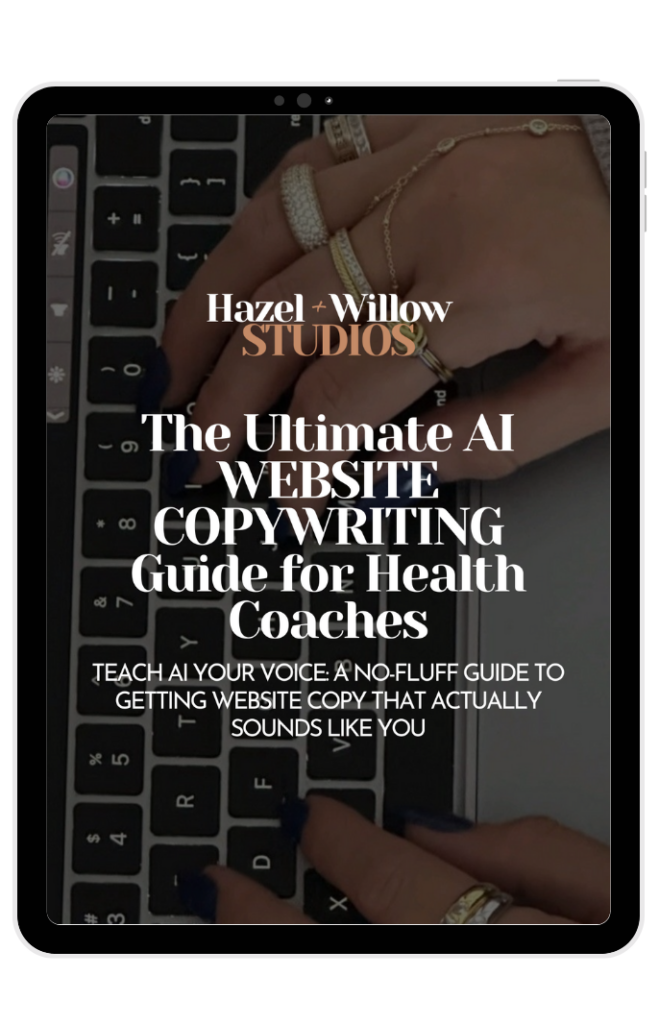
5. Email Sequence Development
Email remains one of the most effective ways to nurture relationships with potential clients and stay connected with your current ones. However, developing strategic, engaging email sequences can be time-consuming and mentally taxing.
AI can help structure your email nurture sequences, welcome emails, and even launch communications while preserving your authentic voice. The key is providing context about your audience, your voice, and the specific goals of each email.
For instance, when creating a welcome sequence for new subscribers, you might outline the transformation you want to take them through over 5-7 emails. What do they need to understand about your approach? What misconceptions do you want to address? What small wins can you help them achieve before inviting them to work with you?
With this context, AI can help draft a logical sequence that guides readers through this journey. You then refine each email, adding personal stories, specific examples, and your unique insights that AI couldn’t possibly generate.
This approach is particularly valuable for launch sequences where you need to communicate complex offers in a cohesive, compelling way. By providing detailed information about your program, the transformation it creates, and common objections, AI can help structure a sequence that addresses all these elements while maintaining consistent messaging.
Remember that the most effective emails sound like they were written personally by you – not by a marketing department or an AI tool. This is why the editing phase is so critical. Read each email aloud and ask, “Would I actually say this to someone I care about?” If not, revise until it authentically represents your voice and approach.
6. Market Research and Understanding Client Needs
Understanding your ideal clients’ needs, challenges, and language is crucial for effective health coaching. AI can help analyze trends and patterns in your niche, identify common questions potential clients might have, and even suggest ways to address specific pain points.
One effective approach is to ask AI to help you explore different facets of your ideal client’s experience. What might they be searching for online? What frustrations might they have experienced with other health approaches? What objections might they have to your particular methodology?
This exploration can reveal gaps in your current messaging or service offerings. Perhaps there’s a common challenge your ideal clients face that you haven’t explicitly addressed on your website. Or maybe there’s a particular objection that’s preventing potential clients from taking the next step with you.
You can also use AI to analyze testimonials or feedback from current clients, identifying patterns in the transformation they’ve experienced or the aspects of your coaching they found most valuable. These insights can help refine your messaging to better reflect the actual impact of your work.
The goal isn’t to have AI tell you who your ideal client is – you know that better than any AI tool. Rather, it’s to expand your thinking about their experience and ensure your messaging addresses all aspects of their journey toward working with you.
7. Creating Lead Magnets and Resources
Lead magnets – those free resources you offer in exchange for email addresses – need to provide genuine value while showcasing your expertise. AI can help streamline the creation of these resources, from initial concept to final structure.
Say you want to create a guide on “5 Surprising Foods That Are Disrupting Your Sleep.” You know the content, but structuring it into an engaging, valuable resource takes time. AI can help outline the guide, suggest compelling section titles, and even draft initial content that you then enhance with your specific recommendations and expertise.
This approach works for various formats – PDF guides, checklists, mini-courses, assessment tools, or educational videos. The AI helps with structure and initial content, while you provide the specialized knowledge and personal touch that makes the resource uniquely valuable.
An often-overlooked benefit is that AI can help ensure your lead magnets align with your paid offerings. By explaining your service model and client journey to AI, you can get suggestions for lead magnets that naturally lead potential clients toward your paid programs rather than just providing isolated tips.
8. Personalized Client Follow-ups
Maintaining consistent communication with clients between sessions can significantly enhance their experience and results. However, personalizing these communications for each client can be time-consuming, especially as your practice grows.
AI can help create templates for different client scenarios that you then customize for each individual. For example, you might develop follow-up templates for clients struggling with emotional eating, sleep issues, or energy fluctuations. Each template would include your standard recommendations, questions to help them reflect on their progress, and encouragement tailored to that particular challenge.
When it’s time to send a follow-up, you select the appropriate template and personalize it with specific references to the client’s situation, recent progress, and any adjustments to their plan. This approach ensures consistent, high-quality communication while significantly reducing the time required.
The same approach works for check-in questions before sessions. Instead of writing these from scratch each time, you can use AI-generated templates that you quickly customize for each client, ensuring you gather the information needed to make your sessions as effective as possible.
9. Social Media Content Planning
Social media can be a powerful tool for connecting with potential clients, but creating consistent, valuable content often falls to the bottom of a health coach’s priority list. AI can help plan content themes, generate initial post ideas, and even draft captions that align with your voice and expertise.
A strategic approach is to develop content pillars – the key themes or topics you want to be known for. For each pillar, AI can help generate numerous post ideas that showcase different aspects of your expertise. You then select the ideas that resonate most and customize them with your specific insights, client examples (anonymized, of course), and authentic voice.
This approach allows you to batch create social content, potentially planning weeks or months in advance rather than scrambling for ideas daily. The time saved can be reinvested in personalizing the content to ensure it truly reflects your unique approach.
Remember that the most engaging social media content comes from your authentic perspective and experiences. Use AI to help with structure and initial ideas, but ensure the final content includes your unique insights and voice.
10. Streamlining Administrative Tasks
Beyond content creation, AI can help streamline various administrative tasks that often consume a health coach’s time and energy. From drafting policies and procedures to creating client onboarding materials, these tools can handle routine writing tasks while you focus on client work.
For instance, you might use AI to help draft initial versions of your cancellation policy, privacy policy, or session guidelines. You would then review and customize these documents to ensure they accurately reflect your practice and meet any applicable regulations.
Similarly, AI can help create client onboarding materials, session preparation guides, or program welcome packets. By providing information about your approach and what clients need to know, you can generate comprehensive materials that you then refine and personalize.
This application of AI isn’t about creating public-facing content that represents your brand, but rather handling routine writing tasks that are necessary but not the best use of your limited time and creative energy.
By delegating these tasks to AI, you free up mental space and time for the aspects of your work that truly require your unique expertise and presence – namely, supporting your clients through their health transformation journey.
Looking to enhance your visual branding along with your content strategy? Download our free Color Kit with three accessibility-friendly color palettes designed specifically for health coaches.
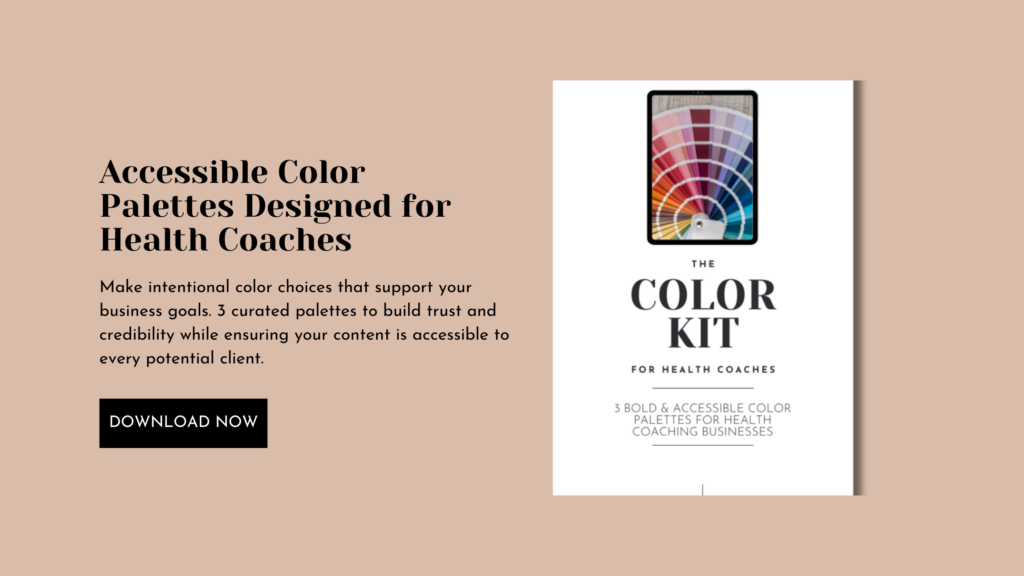
How to Get Started with AI (Without Getting Overwhelmed)
The potential applications of AI in your health coaching business might seem exciting, but also potentially overwhelming. Where do you begin? How do you incorporate these tools without getting distracted from your core work of supporting clients?
The key is starting small, with a clear strategy, rather than trying to revolutionize every aspect of your business at once. Here’s a practical approach to integrating AI into your health coaching practice in a way that adds value rather than complexity.
Choose One Pain Point to Address First
Rather than trying to implement AI across your entire business, identify one specific task that consistently drains your energy or takes more time than you’d like. Perhaps it’s writing your weekly newsletter, creating client resources, or updating your website copy.
Focus on that single application first, giving yourself time to learn the nuances of working with AI tools before expanding to other areas. This focused approach allows you to see concrete results quickly while developing skills that will transfer to other applications later.
Many health coaches find content creation to be an ideal starting point. If you already have a blog or newsletter that you struggle to maintain consistently, this can be a low-risk way to experiment with AI assistance. The content still goes through your review and editing process, ensuring nothing is published without your oversight.
Understand the Available Tools
The AI landscape continues to evolve rapidly, but there are several established tools worth considering for your health coaching business:
For General Content Creation and Assistance:
ChatGPT, Claude, and similar conversational AI tools offer versatile support for various writing and brainstorming tasks. These tools excel at helping structure content, generate ideas, and create initial drafts that you can then customize.
For Specialized Copy:
Tools like Jasper or Copy.ai are designed specifically for marketing copy and may include templates for specific content types like email sequences or website copy.
For Content Enhancement:
Grammarly (with its AI capabilities) or Hemingway can help refine your writing, ensuring clarity and proper tone after you’ve customized AI-generated content.
Start with one general-purpose tool like ChatGPT or Claude to experiment with basic applications. As you become more comfortable, you can explore specialized tools for specific needs in your business.
Learn the Art of Effective Prompting
The quality of output from AI tools depends significantly on the quality of your prompts. Learning to write effective prompts is perhaps the most valuable skill you can develop when working with AI.
A good prompt includes:
- Context about you and your business: “I’m a health coach specializing in hormone balance for women in perimenopause, using a combination of nutritional support and stress management techniques.”
- Specific information about your audience: “My clients are typically professional women in their 40s who are experiencing sleep disruption, mood changes, and fatigue.”
- Your specific voice and approach: “My communication style is warm and conversational, with a focus on making complex hormonal concepts accessible. I often use kitchen and garden metaphors to explain body systems.”
- The exact output you’re looking for: “I need a first draft of an email introducing my new 6-week hormone balance program. The email should emphasize the sleep improvements clients typically experience and address the common concern that hormone support requires pharmaceutical intervention.”
Compare this detailed prompt to simply asking for “an email about my hormone program.” The difference in output quality will be dramatic.
As you experiment, keep track of prompts that yield particularly good results. These can become templates for similar tasks in the future, saving you even more time.
Develop a Review and Refinement Process
AI-generated content should never go directly to clients or your audience without your review and refinement. Establish a clear process for transforming AI drafts into finalized content that truly represents your voice and expertise.
This process might include:
- Initial review for accuracy: Ensure all health information aligns with your approach and professional standards.
- Voice alignment: Modify phrasing to match how you naturally communicate with clients.
- Adding personal elements: Incorporate your stories, examples, and specific methodologies that AI couldn’t generate.
- Structural refinements: Adjust the flow and organization to better serve your specific purpose.
- Final polish: Make sure everything reads naturally and authentically.
Over time, you’ll develop a feel for how much editing different types of content require. Some AI-generated content might need minimal adjustments, while other pieces require significant reworking to meet your standards.
Set Ethical Boundaries
As you incorporate AI into your health coaching business, establish clear ethical boundaries about its appropriate use. These boundaries will vary based on your practice, but might include:
- Never inputting identifiable client information into public AI tools
- Always reviewing health-related content for accuracy before sharing
- Being transparent with clients about your use of AI when appropriate
- Never representing AI-generated health advice as personalized recommendations without your professional review
- Using AI for structure and efficiency, not as a replacement for your expertise
These boundaries ensure that AI remains a tool that enhances your practice rather than compromising your professional integrity or client relationships.
Start Simple, Then Expand
Your first experiments with AI don’t need to be complex. Start with simple applications like asking AI to help outline a blog post, generate ideas for your social media content calendar, or draft a basic follow-up email template.
As you become more comfortable with the technology and develop your prompting skills, you can gradually expand to more sophisticated applications like those discussed earlier in this article.
The goal is sustainable integration that genuinely saves you time and enhances your work, not adding another complicated system to your already busy practice.
Remember that AI tools are evolving rapidly. What they can do today is just the beginning. By developing these foundational skills now, you’ll be well-positioned to take advantage of new capabilities as they emerge, keeping your health coaching practice at the cutting edge without sacrificing the personal touch that makes your work special.
Finding Your Balance with AI
AI tools offer tremendous potential for health coaches looking to scale their businesses without sacrificing authenticity. When used strategically, AI can help you create more consistent content, streamline administrative tasks, and focus more time on what truly matters—supporting your clients through their health transformation journeys.
The key to success lies not in blindly adopting these tools, but in approaching them with intention and clarity about your unique voice and methodology. AI works best when it serves as your assistant rather than attempting to replace your expertise.
Remember these fundamental principles as you incorporate AI into your health coaching practice:
- Your specific knowledge and approach should always guide the AI, not the other way around.
- Detailed, specific prompts yield dramatically better results than vague requests.
- Editing is essential—the magic happens when you transform AI-generated content with your unique voice and perspective.
- Some aspects of your business, particularly direct client care and your core philosophy, should remain primarily human-driven.
- Start small with one or two applications, then expand as you become more comfortable with the technology.
Take Your Next Step with AI
If you’re ready to leverage AI specifically for creating authentic website copy that truly represents your health coaching practice, my Ultimate AI Website Copywriting Guide provides a comprehensive framework for doing exactly that.
This comprehensive guide provides exact prompts for each page of your website—from your homepage to your about page, services, and more. You’ll receive a step-by-step framework for transforming generic AI output into content that genuinely captures your unique health coaching approach. No more staring at blank pages or settling for cookie-cutter wellness language that makes you sound like everyone else.

Whether you decide to explore the guide or begin experimenting with AI on your own, remember that these tools are here to enhance your valuable work, not replace it. The future of health coaching isn’t either/or when it comes to technology—it’s finding the perfect balance between innovation and the human touch that makes transformation possible.
